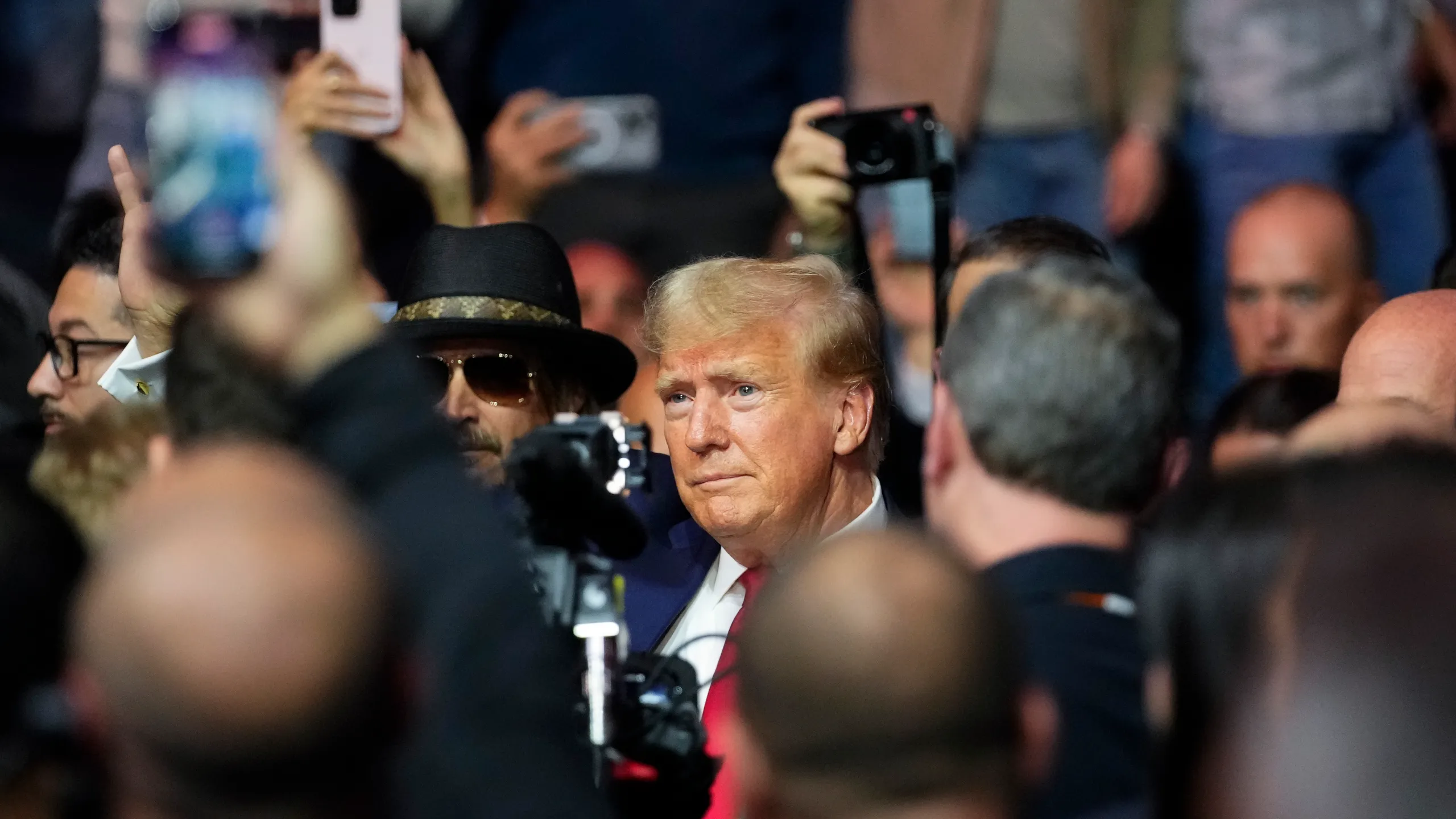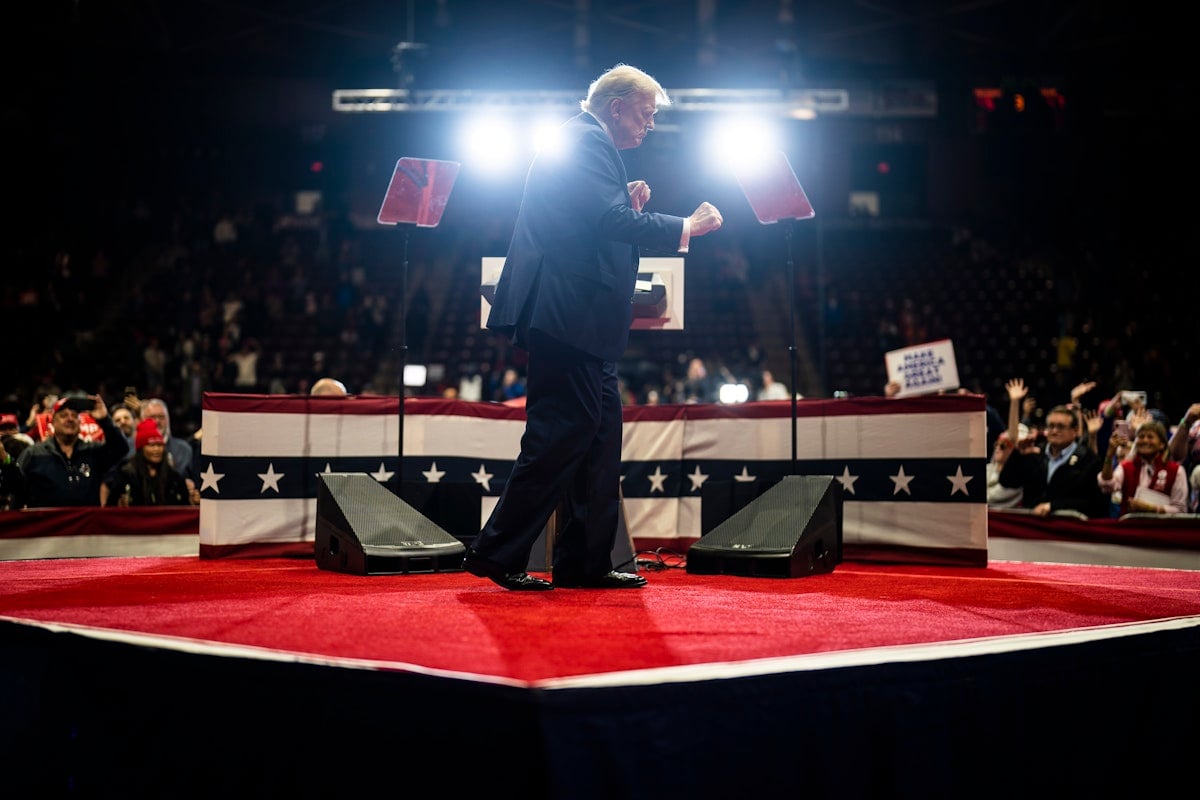Monsters lurked in unexpected places, even if none were immediately visible outside Winthrop Coliseum in Rock Hill, South Carolina, at 10 a.m. on a Friday morning. The rain had drenched the drive from Columbia, the state capital, to this former mill town of 20,000 residents.
Though the rain had paused, clouds lingered ominously, and the wind whipped through a giant Trump 2024 flag held by a member of the Front Row Joes’ group. The flag-bearer struggled against the gusts, resembling a sailor battling a storm at sea. Amidst the gray sky, only the red-white-and-blue colors of the flag stood out.
Despite the early hour, Donald Trump wasn’t scheduled to speak until 4 p.m. at the 6,000-capacity basketball arena. The few faithful attendees lining up were outnumbered by vendors hawking Trump merchandise and sharply dressed Team Trump members orchestrating proceedings with casual efficiency.
Just the day before, in Columbia, I had conversed with Hollis “Chip” Felkel, a seasoned Republican consultant who had worked for the George W. Bush campaign in 2000.

Trump (Credits: Western Slope Now)
With the South Carolina Republican primaries looming, Felkel, an anti-Trumper, expressed frustration and disillusionment, perceiving Trump’s support primarily from what he termed “low-information voters” – individuals he characterized as evangelical isolationists fixated on revenge politics.
Outside the Coliseum, the atmosphere was akin to a carnival, with revenge politics limited mostly to provocative slogans on clothing. Despite initial wariness towards the media, attendees eagerly engaged in conversation as the line steadily grew.
Topics ranged from online platforms like Telegram and QAnon to Trump’s promises of “draining the swamp.” Amidst the buzz, anticipation hung thick in the air, occasionally punctuated by moments of tension, such as when a woman sharing information was silenced by a taciturn observer, suspected of being a Democrat.
The line snaked longer, adorned with a mix of 2016 and 2024 MAGA hats, reflecting varied sentiments from “Keep America Great” to “Take America Back.” As we neared the entrance, vendors dropped prices, albeit with repetitive jokes about their products’ origins.
The scene mirrored the uncertainty and disarray underlying the anticipation of the present moment. In 2016, Trump had been the outsider; now, he embodied a paradoxical status as both outsider and ultimate insider.
Inside the stadium, predominantly white faces filled the seats, with people of color prominently positioned in front. As Trump took the stage, his appearance matched the familiar image: impeccably styled hair, a blue suit, and a red tie.
Yet, his voice, though recognizable, carried a surprising dissonance. Despite sporadic bursts of applause and chants, a sense of fatigue permeated the air as Trump delved into a litany of grievances and promises, occasionally interrupted by departures from the audience.
Trump’s speech, spanning nearly 90 minutes, meandered through familiar territories of criticism and self-praise. As he spoke of border security, economic policies, and cultural issues, coherence gave way to inconsistency.
Yet, amidst the disjointed narrative, one message remained clear: fear of unseen threats and the promise of a triumphant reversal. As the event concluded, the exhaustion on attendees’ faces hinted at a waning enthusiasm, signaling a departure from the insurgent energy of years past. Nonetheless, the core message persisted: monsters lurked everywhere, and the swamp awaited its draining.























